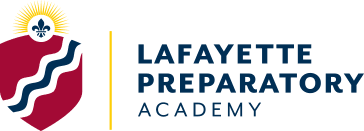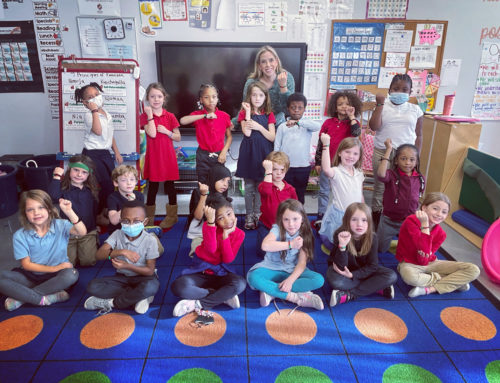On March 13, 2020, Lafayette Preparatory Academy closed our doors to students for Spring Break. In response to the COVID-19 pandemic, our doors remained closed for the duration of the 2019-2020 school year. When it became clear the situation would last much longer than anticipated, we began refining our remote learning program to provide students the support and learning opportunities they would need for the remainder of the year.
Since then, we have continued to build a program to help students excel and work toward their personal best no matter the format of the coming year: virtual, distanced, onsite, and hybrid (a blend of onsite and distanced instruction).
Currently, LPA is offering virtual and distanced instruction through the end of the first quarter: October 16, 2020. During that time, we will evaluate the data related to the spread of COVID-19; guidance from local, state, and national health agencies; guidance from the Department of Elementary and Secondary Education; data specific to our community (students and staff); and feedback from our community (students, families and staff). With this information, we will make a determination about how to proceed for the second quarter.
Our planning process prioritized the health and well-being of our full community, implementing robust systems of support. We learned very early that a remote learning program must be very different than an onsite learning program: it requires more options, scaled back time commitments, new ways of thinking about building connections and relationships, and an immense amount of flexibility.
With flexibility, though, we learned that structures and systems continue to be important. For this reason we have built the following structures and systems to support students, families, and staff:
- Provide parents support to develop their knowledge of online platforms to support remote learning: Seesaw, Khan Academy, Google Classroom
- Provide professional development to teachers and leaders to support the new method of instruction/school
- Regularly distribute materials to families who need them: technology, paper packets, school supplies, medicines, food, essential items, etc.
- Develop systems for students, families, and staff to provide feedback, ask questions, and let us know if they need support
- Utilize a student engagement tool to effectively identify students’ levels of engagement with school
- Utilize a Positive Support Team to identify students and families with challenges; design strategies to support their needs
- Provide Special Education services through Telehealth, Zoom, or onsite (best method determined by the IEP team)
- Communicate regularly regarding evolving information about the virus, changes in schedules, available resources, etc.
- Implement online schedules for classes and support opportunities for families and students: schedules include whole group, small group and individualized academic and social-emotional learning opportunities. Instruction is recorded and available at a different times for those unable to attend sessions live.
- Implement universal methods for receiving, submitting, and providing feedback on student work
In addition to developing systems and the flexibility necessary in remote learning, we also utilize strategies to support the health and well-being of students, families and staff:
- Daily morning meeting (K-4) or advisory (5-8) to sustain relationships and connections amongst students and staff
- Regular staff meetings to reflect on the process and hear feedback about concerns and adjustments needed
- Coaches for each staff member to support remote learning and hear feedback about the process
- Flexible work schedules for staff and families
- Opportunities for staff members to discuss the process and concerns with school leadership
- Ongoing PLCs, with flexibility in scheduling
- Weekly parent-focused emails and staff-focused emails, including videos to explain context and support school-wide alignment
- School counselor support
- Coaching of parents on how to support students at home
- Positive Support Team support for students, families, and staff
- Material distribution
- Food distribution
- Information about how to talk to kids about COVID-19
- Information about where to find resources, testing, etc. related to COVID-19
Planning for the 2020-2021 school year was an extensive process that included our full community. We appreciate all of the staff and families that spent much of their summer planning for a great launch to the 20-21 school year. Our planning process included the following:
- Staff-based Restart Task Force to provide feedback and input into the coming year’s design (met weekly beginning 5/7/20)
- Parent Restart Committee to provide feedback and input into the coming year’s design (met beginning 6/10/20)
- Consultation with the Board of Directors on planning for the current and upcoming school years
- Guidance from the CDC, St. Louis Department of Health, Department of Elementary and Secondary Education, and state and local governments.Weekly meetings with the Mayor’s Office re: food, re-opening, health protocols, etc.
- Weekly updates with Dr. Fred Echols of the St. Louis City Department of Health
- Weekly school leader meetings with superintendents of large school districts, other charter leaders, parochial school leaders and independent school leaders
- Regular meetings with different arms of the Department of Elementary and Secondary Education
- Family and staff surveys for feedback and input regarding the Spring closure and the restart plan
- Monthly feedback and input from the LPA Parent Advisory Committee
- LPA Leadership Team meetings to evaluate data regarding the program in place and plan for the coming months
- Collaboration with our sponsor, UMSL, on planning for the end of year and the 20-21 school year
- Attendance at many webinars and meetings led by various professionals in a multitude of areas related to the closing of schools or transitioning to remote learning: providing SEL support, technology incorporation, structuring remote learning, quality instruction in remote learning, grading in remote learning, health protocols, finance, FERPA and HIPAA in remote learning, legal ramifications of remote learning for all stakeholders, personnel policies, finance, etc.
Maintaining a strong planning process over the course of summer was essential to our success in being ready for the Fall of 2020-2021. We utilized the processes listed above i to design our comprehensive Infection Control Plan and Virtual and Distanced Learning Plans.
Now that the school year has begun, we continue to monitor community feedback, student engagement, and the effectiveness of our program in order to inform adjustments to the plan. As we make adjustments for the coming quarter, we will communicate them to students, staff, and families.
LET US KNOW IF WE CAN HELP!
Should any of our current families have a need, please feel free to reach out to Ta’Nisha Pirtle at 314-880-4458 or TaNisha.Pirtle@lafayetteprep.org.
We may not be able to meet every need, but we will do our best to connect you to someone who can help.
If you are a prospective family and have any questions, please reach out to Kristine Wentzien at kristine.wentzien@lafayetteprep.org.






